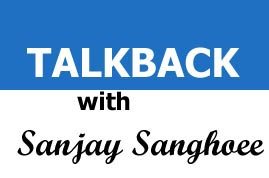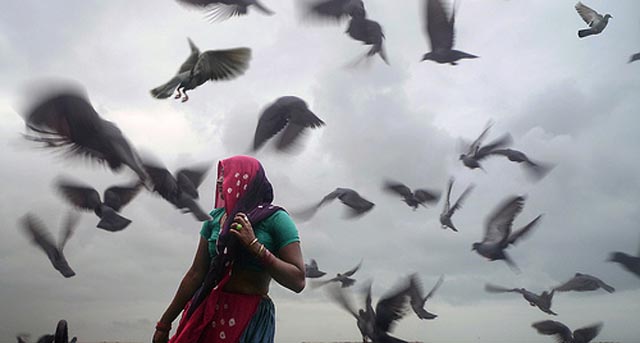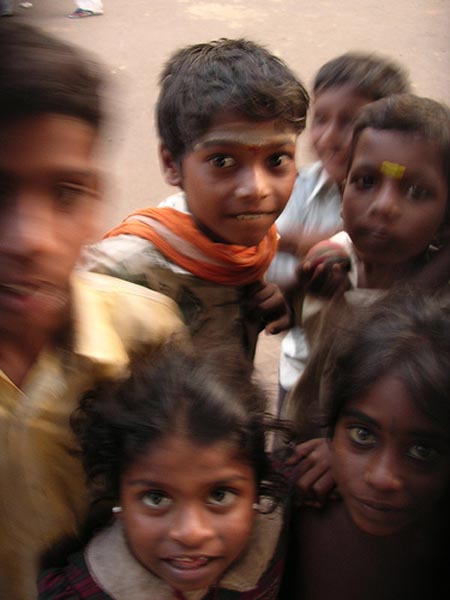

Photo Credit: nandadevieast via Compfight cc
India: Naked Children, Cows & Bollywood Starlets?
Being Indian-American, I have gotten used to the clichéd depiction of my motherland as a nation of naked children running in the streets, cows, the ubiquitous smell of curry, and dancing Bollywood starlets. Most of the time I shrug it off, but lately it has been hard to ignore the lopsidedness of the American media in their portrayal of India.
The latest salvo, of course, has come in the wake of the Delhi rape scandal, and has tarnished the reputation of the country immeasurably. Not that rape and women’s rights are not real problems in India, but the persecution of an entire nation and culture is unjustified. After all, we are still talking about a nation with thousands of years of rich history and advancement behind it and a cultural pedigree that frankly far outpaces that of America; not Iran or some tribal village in Afghanistan where they still use the abacus and stone women for adultery. We are also talking about a nation with more than a billion people and very complex sectarian, cultural, religious, and economic dynamics that don’t lend themselves to black-and-white characterization or blanket judgment.
But those nuances are lost on the American media, which for some reason loves whipping India and painting it as a stone age nation over any issue that it can find. From the slick but ultimately shallow Slumdog Millionaire (yes, I know Danny Boyle is English, but the movie was made to appeal to American tastes). It seemed to take perverse pleasure in highlighting India’s negatives while ignoring the considerable economic and social development in the country over the past few decades, not to mention the very real work being done by activists in the country to address poverty, police abuse, political corruption, and other ills. There have been round upon round of scathing editorials by American and Indian-American writers holding “all Indian men” responsible for the abuses of the few and belittling our entire culture over specific incidents, there has been an onslaught of bias and distortion.

India Negatives: Masala or Fact?
Well, here’s the thing. Crippling poverty is an abomination, especially for a civilized country in the 21st century, corruption is a scourge on our society, and rape is a matter of national shame, but all these things exist everywhere in the world, including in America, and to single out India as being some type of unique culprit on these fronts is deliberately misleading and extremely damaging.
There are two very telling statistics to consider here:
- The poverty rate in the US is more than 16% (including 20% of children) but has been rising for several years. The poverty rate in India is more than 30% but has actually been falling in the last few years. That does not mean that poverty is not an urgent concern for India but it is clearly one that is being met more effectively in that nation than in America!
- The number of reported rapes in India is about 22,000 per year which translates into 0.002% of India’s population. Compare this to the US, where 85,000 rapes are reported, and which is 0.03% of the population. Of course, we all know that many more rapes go unreported and that sexual assault in all its forms is much larger in scope, but the fact that the likely incidence of rape in America is 10 times that in India speaks volumes about the bias in reporting.
What this means is that while India’s problems are real and serious, the doomsday scenarios painted by the press are more “masala” than fact.
If the Delhi rape was a function of Indian culture, then what does the Ohio rape say about American culture?
If the American media wants to be fair, then it should also acknowledge the extent of problems right here and examine the influence of our own attitudes and culture on those problems. If the Delhi rape was a function of Indian culture, then what does the Ohio rape say about American culture? If the number of violent crimes in India is high, do we want to count the number of gun homicides in Chicago? If the slums of India are a national disgrace, then what do the projects in the Bronx say about our urban decay? If child abuse is only widespread in India, then how come therapists in America have a thriving business helping people get over childhood sexual trauma?
If the American media is truly outraged by the situation in India and thinks that it is necessary for Indians to march on their government, then it should also be outraged by the situation in the US and agitate for similar marches on Washington, DC
My point is that if journalists, editorialists, authors, or filmmakers (regardless of nationality) are going to point fingers, the first one should be pointed back at themselves. Hypocrisy and biased views do not solve problems; they only exacerbate them. If India’s challenges are going to be met, then those analyzing them should get their hands dirty, understand the complex dynamics of the society and then suggest smart solutions instead of ranting against an entire nation or an entire gender.

SANJAY SANGHOEE is a political and business commentator. His blogs appear in Huffington Post, FORTUNE, and other publications. He has worked at leading investment banks as well as at a multi-billion dollar hedge fund. He has an MBA from Columbia Business School and is the author of the financial thriller “Merger” (available on Amazon) which Chicago Tribune called “Timely, Gripping, and Original”. Please visit his website www.sanghoee.com and follow him on Twitter @sanghoee
Related Articles:
The Dilemma of Looking after Aging Parents
NRI Tales – Becoming Indian in America
Money Games – Rise of the Rich, Fall of the Nation
